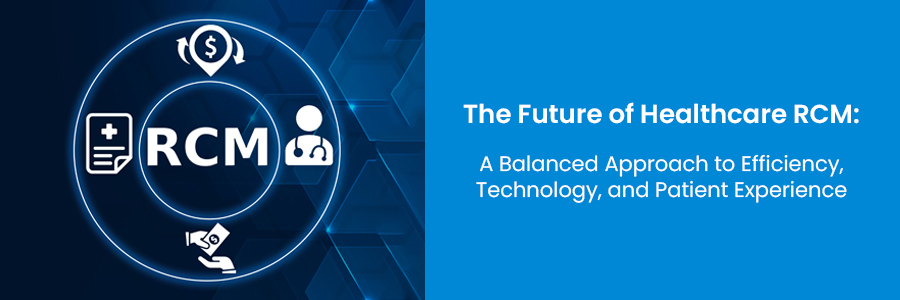Driven by technology, consolidation, and rising patient expectations, healthcare organizations are adopting new strategies to streamline operations, cut costs, and elevate the patient experience. This shift isn’t just about billing and collections; it’s about reshaping healthcare revenue cycle management trends to ensure efficiency, compliance, and long-term financial health. Here’s an in-depth look at the key trends driving healthcare revenue cycle management trends, from automation and data-driven insights to the expanding role of private equity.
1. Across Front, Middle, and Back Office Functions, Automaton will play an Important Role
“Automation is no longer just a tool; it’s the lifeline of modern healthcare revenue cycle management trends.”
AI and Automation is transforming healthcare revenue cycle management trends, from patient intake to the final collection. With labor shortages and reimbursement challenges, healthcare providers are adopting automation to streamline complex, repetitive tasks across all areas of the revenue cycle.
- Front Office: Technologies like conversational AI and voice bots — such as MindVoice — enable structured conversations for routine inquiries like eligibility verification, claims status, and appointment scheduling. Self-service portals and mobile apps empower patients to access information and make payments independently, improving both efficiency and patient satisfaction.
- Middle Office: Middle office functions, including coding, charge capture, and clinical documentation improvement (CDI), are significantly improved with AI-driven tools. Automated coding systems ensure compliance by suggesting accurate codes based on documentation, while CDI tools help capture complete patient data, reducing denials.
- Back Office: Automation in the back office is focused on claims processing, follow-ups, and collections. Robotic Process Automation (RPA) handles tasks like tracking claim statuses and sending payment reminders, while AI-powered analytics provide insights into billing trends to manage high-value claims effectively.
- Why It Matters: Automation can reduce processing times by up to 30% and operational costs by as much as 25%, enabling staff to focus on patient-centric, high-value activities and enhancing patient experience.

2. Bilingual English-Spanish Support for an Inclusive Revenue Cycle
“In a multilingual nation, clear communication is key to quality care and an effective revenue cycle.”
With nearly 42 million Spanish speakers in the U.S., healthcare providers are prioritizing accessible, bilingual communication throughout the revenue cycle. This support enhances patient engagement, builds trust, and ensures that Spanish-speaking patients fully understand their financial responsibilities.
- Front Office
- Bilingual front office staff and technologies like MindVoice voice bots help Spanish-speaking patients with eligibility verification, scheduling, and claim status inquiries, improving accessibility and the patient experience.
- Patient Financial Counseling and Billing Support
- Bilingual financial counselors ensure that Spanish-speaking patients understand their cost estimates, payment plans, and financial assistance programs, which improves the likelihood of timely payments.
- Collections and Customer Service
- Bilingual agents provide compassionate support, which can reduce payment issues and increase compliance with payment plans.
- Why It Matters: Patients who receive care in their preferred language are 30% more likely to adhere to treatment and payment plans, supporting both patient satisfaction and healthcare revenue cycle management trends efficiency.
3. Private Equity’s Expanding Role in Healthcare and RCM
As experts say, “Private equity isn’t just investing in healthcare — it’s reshaping the industry.”
Private equity (PE) has become a major force, consolidating providers, payers, and healthcare revenue cycle management service providers. They bring capital, resources, and operational efficiencies to healthcare.
- Provider Consolidation: PE firms acquire hospitals, urgent care centers, and specialty practices, forming larger networks with shared resources, enabling better payer contracts, standardized processes, and economies of scale.
- Payer Influence: PE-backed consolidation in health plans gives payers more negotiating power and enforces stricter reimbursement standards. Robust technology solutions are essential for providers to navigate these complex payer requirements and avoid denials.
- RCM Service Consolidation: PE consolidation in healthcare revenue cycle management trends service providers creates full-service vendors handling everything from patient access to collections, benefiting smaller organizations that can access end-to-end expertise.
- Impact on Healthcare: PE-backed organizations gain access to capital, technology, and scalability, but balancing profitability with quality care and patient experience remains challenging.
4. Patient-Centric Revenue Cycle: The Drive for Transparency and Engagement
“Patients want to understand their bills, not be surprised by them.”
Patients now expect transparency in healthcare costs and a seamless experience. Healthcare revenue cycle management trends are shifting to include patient-centered practices like upfront cost estimates, simplified billing, and self-service payment options to enhance trust and collections.
- High-Deductible Health Plans (HDHPs): With HDHPs rising, patients are paying more out of pocket, making clear communication about costs essential. Tools like cost estimators and payment plans improve understanding and increase the likelihood of prompt payment.
Why It Matters: A survey by AccessOne found that 41% of patients are more likely to pay bills promptly when they understand their charges, which supports both collections and patient loyalty.
5. Data Analytics and Real-Time Insights for Optimized Revenue Cycle Management
“Data isn’t just for reports; it’s for real-time action.”
Advanced analytics play a crucial role in healthcare revenue cycle management trends, providing real-time insights into claim denials, payment trends, and patient behaviors. Predictive analytics in the middle and back office help RCM teams identify denial patterns and take proactive measures.
- Predictive Analytics for Denial Management: By analyzing past claims, RCM teams can identify common triggers and reduce denials, which leads to fewer reworks and faster revenue recovery.
Why It Matters: Leveraging analytics reduces denial rates, enhances resource allocation, and helps providers achieve a more resilient healthcare revenue cycle management trends.
6. Increased Adoption of Outsourcing and Offshore Partnerships
“In a resource-constrained environment, outsourcing is more than a cost-saver — it’s a lifeline.”
Outsourcing non-core RCM functions like billing, coding, and collections is now a common practice for healthcare providers. Offshore providers offer cost savings, scalability, and expertise, especially for high-volume back-office tasks.
- Offshore Providers in the RCM Ecosystem: Regions like India and the Philippines supply skilled professionals for coding, billing, and denial management. These partnerships lower costs and improve coding accuracy.
- Why It Matters: Offshore outsourcing can cut RCM costs by 20-30%, easing financial pressures while ensuring compliance.
7. Integration of Value-Based Care Metrics in Revenue Cycle Reporting
“Quality, not quantity, drives today’s revenue cycle.”
Value-based care models tie reimbursement to patient outcomes and quality metrics, affecting healthcare revenue cycle management trends strategies. RCM teams are adjusting by developing reporting structures that link revenue to health outcomes, patient satisfaction, and preventive care.
- Impact of Value-Based Metrics: RCM teams work with clinical staff to track metrics like readmission rates and health outcomes. This aligns with value-based reimbursement models.
- Why It Matters: Value-based care enhances prevention, improves patient satisfaction, and optimizes revenue cycle management.
8. Proactive Denial Management and Prevention
“Prevention beats reaction when it comes to denied claims.”
Rising denial rates make proactive denial management a top priority for RCM teams. In 2025, healthcare providers leverage AI and analytics to prevent common denials. They focus on pre-authorizations and accurate coding to reduce denied claims.
- Why It Matters. Denial prevention can save millions annually for Healthcare Providers. Reducing denials can significantly impact their bottom line as they increasingly operate on tight margins.
9. Telehealth Billing and Integration in RCM
Most industry experts believe “Telehealth is here to stay, bringing new opportunities — and billing challenges.”
Telehealth is now a core aspect of healthcare but comes with unique billing challenges. Providers are aligning telehealth billing with revenue cycle management to meet payer standards and ensure accurate coding.
- Why It Matters: Telehealth is expected to grow by 22% annually. Optimizing its billing process is essential for efficient revenue capture.
The Future of Healthcare RCM: A Balanced Approach to Efficiency, Technology, and Patient Experience
In 2025, healthcare revenue cycle management (RCM) is no longer just about managing finances. It’s about delivering efficient, patient-focused care in an increasingly complex landscape. Automation, data analytics, outsourcing, bilingual support, and patient-centric strategies are driving the evolution of RCM. helping healthcare providers build systems that address both financial and patient care needs. Meanwhile, private equity investments, payer consolidation, and regulatory changes bring new challenges and opportunities for healthcare organizations.
The future of RCM looks bright for providers willing to adapt. At Fusion CX, we support healthcare providers through these shifts. Our solutions are designed to enhance patient experiences, optimize financial performance, and enable a sustainable, value-driven healthcare system. Welcome to a new era of healthcare revenue cycle management, where efficiency and empathy work together seamlessly.

